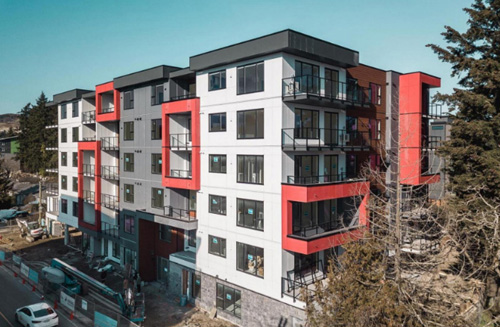Wednesday March 26, 2025 | LANGFORD, BC
Opinion-Editorial by Devin Dignam | Posted by Island Social Trends
Five years ago, my wife, my pets, and I lived in Belmont Park in Colwood. Our $1,500/month all-inclusive rent covered a three-bedroom, two-bathroom duplex with a garage, driveway, deck, and small side yard. Surrounded by forests, we were just a 15-minute walk from the waterfront. During the height of the pandemic, we were no-fault evicted when the owner decided to sell.
With three months’ notice, we had to find new housing and ended up in a pet-friendly apartment in Langford. Our rent jumped $600/month for much less space—and not including water, electricity, or parking. Built in 2019, the building lacked air conditioning, and for our first month—we moved in during the Heat Dome, with indoor temperatures exceeding 35°C—our fridge didn’t work. The building complex had no green bin service and has recently stopped collecting glass.
Rent increases:
This week, we received our third consecutive maximum rent increase. Since July 2021, our monthly rent has increased by over 10%—almost $218—adding more than $2,610 a year. We will now be paying over $27 800 annually to live in a heat-trap apartment, surrounded by artificial turf and a giant parking lot.
REITS:
Who’s to blame? Our landlord is the aptly-named Killam Apartment REIT. If you aren’t familiar, REITs (Real Estate Investment Trusts) are corporations that own, operate, or finance real estate. Investors purchase shares in the company, and the company uses this large amount of capital to acquire real estate holdings.
Unlike other businesses, REITs exploit a tax loophole that exempts them from corporate taxes. Instead of paying taxes on their income and gains, they pass profits directly to shareholders, who are only taxed on distributions. Prioritizing profit over livability, REITs cut costs through neglected maintenance, deteriorating conditions, and relentless rent hikes.
While investors drive Canada’s housing crisis, policymakers encouraged it. In 1993, Brian Mulroney’s Conservative government decided to follow in the footsteps of the US and allow REITs. Later that year, Jean Chrétien’s Liberal government stopped funding non-market housing. Cutting public housing while giving corporate landlords massive tax breaks helped create today’s affordability crisis; in 2024, only 23% of renters in BC pay what’s considered ‘affordable’ rent—30% or less of their income.1
We need action from all levels of government. Increasing supply alone won’t lower rents—developers prioritize market-rate and luxury units, leaving working-class people behind. We need three types of policies: tenant protections (non-market housing, rent caps tied to units, rent-to-own programs), systemic reforms (ending the REIT loophole, reversing policies that inflate property values), and labour/income protections (higher wages, stronger worker rights). Without these, affordability will keep falling, no matter how many homes go up.
Federal election timing:
With a federal election underway, ask your local candidates how they plan to lower rents. If they only offer supply-side platitudes like ‘build the homes,’ press them harder. Ask how they’ll ensure those homes are actually affordable. If they can’t answer, it’s a clear sign they either don’t understand the issue—or they simply care more about investor profits than your right to housing.
Reference:
1. Royal LePage 2024 Canadian Renters Report (https://marketing.rlpnetwork.com/Communications/Chart_Royal-LePage-2024-Canadian-Renters-Report.pdf)
===== ABOUT THE WRITER:
Devin Dignam is currently a resident in the west shore of Greater Victoria. He has been an educator, DFS pro, referee, and editor at Wagesofwins. Devin Dignam is on Bluesky at @devindignam.bsky.social .
===== RELATED:
NEWS SECTIONS: HOUSING








